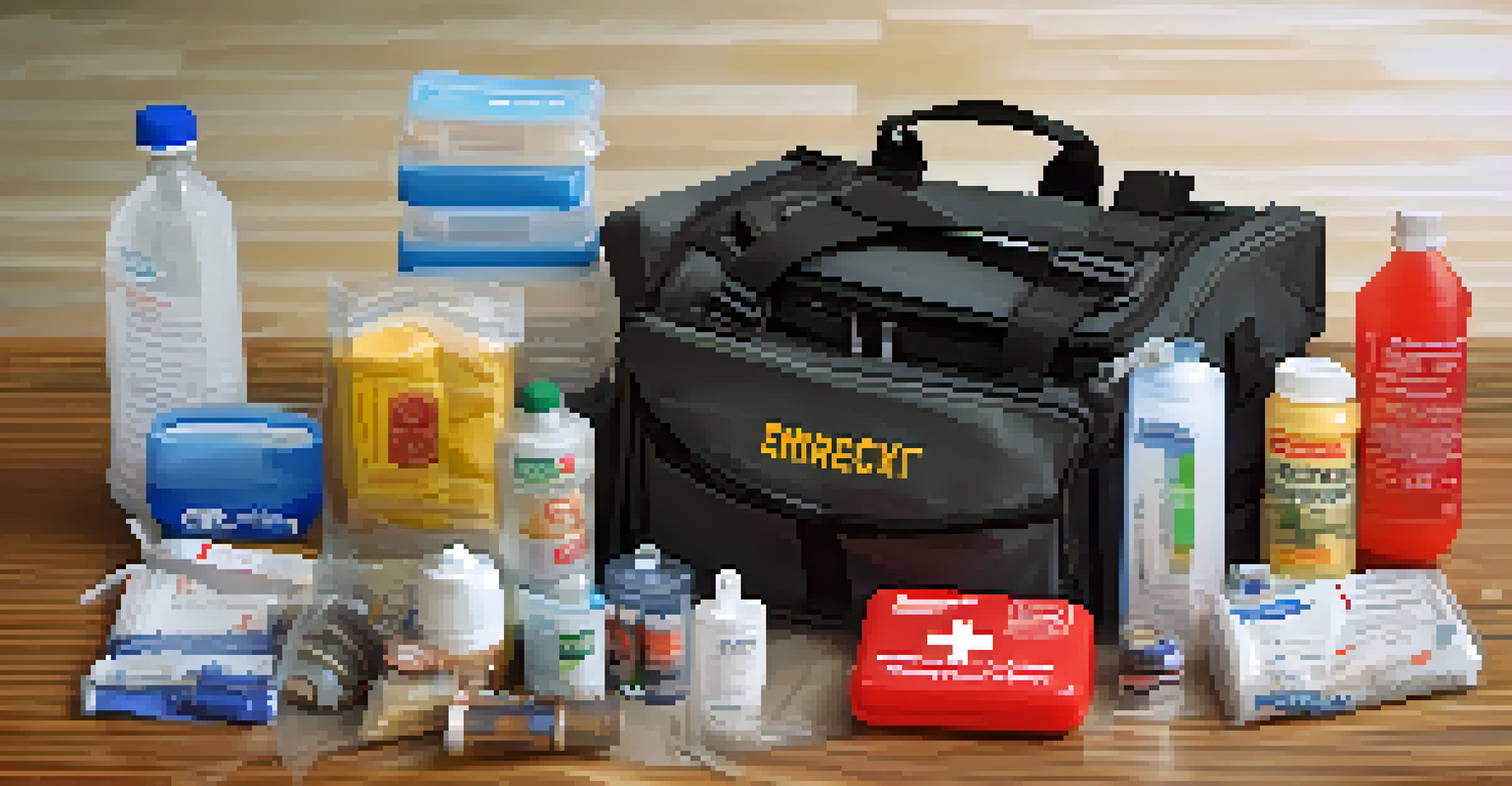Essential Steps for Personal Disaster Preparedness in NYC

Understanding the Types of Disasters That Can Occur in NYC
New York City is a bustling metropolis, but it’s also vulnerable to various disasters. From hurricanes and floods to blizzards and blackouts, understanding the potential threats is the first step in preparing yourself. Each type of disaster can have unique consequences, so being aware of them helps you plan effectively.
By failing to prepare, you are preparing to fail.
For instance, hurricanes can lead to significant flooding, while winter storms might cause power outages and dangerous travel conditions. In addition, there are also man-made emergencies like terrorist attacks or chemical spills. Recognizing these threats allows you to tailor your preparedness efforts accordingly.
By familiarizing yourself with these potential disasters, you can better anticipate your needs and create a comprehensive emergency plan. This awareness not only helps you stay safe but also empowers you to assist others in your community during tough times.
Creating a Comprehensive Emergency Plan for Your Household
A solid emergency plan is like a roadmap that guides you and your family through a crisis. Start by discussing with your household members what to do in various scenarios. Ensure everyone knows where to meet if you get separated and how to communicate if cell service is down.

Consider including important details in your plan, such as emergency contacts, evacuation routes, and local shelters. It’s also wise to designate a friend or relative outside of the area who can act as a point of contact. This way, you can keep everyone informed during an emergency.
Know NYC Disaster Types
Understanding the various disasters like hurricanes, floods, and man-made emergencies is crucial for effective preparedness.
Remember, an emergency plan isn’t just a one-time effort. Regularly review and practice your plan to keep everyone familiar with it, and update it as your circumstances change. This proactive approach can make all the difference when a real disaster strikes.
Building an Emergency Kit for Your Home and Car
An emergency kit is essential for any disaster preparedness plan. Start by gathering basic supplies that can sustain you and your family for at least three days. Key items include non-perishable food, bottled water, a flashlight, batteries, and a first aid kit.
The time to repair the roof is when the sun is shining.
Don’t forget to personalize your kit based on your family’s specific needs. For example, if you have pets, be sure to include food and supplies for them as well. Additionally, consider adding important documents, such as identification and insurance papers, stored in a waterproof container.
Once your kit is ready, place it in an easily accessible location at home and consider having a smaller version in your car. This way, you’ll be prepared whether you’re at home or on the go, ensuring you can respond quickly to any emergency.
Staying Informed About Local Emergencies and Alerts
Staying informed is crucial during emergencies, and NYC offers various ways to receive alerts. Sign up for the city's emergency notification system to get real-time updates about severe weather, traffic advisories, and other critical information. This simple step can keep you one step ahead during a crisis.
Additionally, keep an eye on local news outlets and weather apps for updates. Social media platforms can also provide immediate information, especially during fast-moving situations. Establishing a routine to check these resources can help you stay informed and make timely decisions.
Create a Family Emergency Plan
Establishing a comprehensive emergency plan ensures that all family members know how to respond during a crisis.
Being informed allows you to respond appropriately and calmly during an emergency. Remember, knowledge is power, and the right information can help you protect yourself and your family when it matters most.
Developing a Communication Plan with Family and Friends
In times of disaster, effective communication can be challenging, especially if traditional methods fail. Establish a communication plan with your family and friends to ensure everyone knows how to reach each other. This might include texting or using social media if phone lines are congested.
Choose a designated family member or friend outside of the city as your point of contact. This person can help relay messages and updates, reducing confusion among your loved ones. Make sure everyone is aware of this plan and knows how to reach this contact, even if local connections are lost.
Practicing your communication plan can help alleviate anxiety during a real emergency. By being prepared, you ensure that you and your loved ones can stay connected, providing peace of mind in uncertain times.
Understanding Evacuation Routes and Local Shelters
If disaster strikes, knowing where to go and how to get there is vital. Familiarize yourself with the evacuation routes in your area, especially if you live in a flood-prone zone or a building that may not be safe during severe weather. NYC provides maps and resources to help residents understand their options.
Additionally, locate nearby shelters where you can seek refuge if necessary. This information can usually be found on local government websites or through community organizations. Make a note of these locations and plan how you’ll get there in case of an emergency.
Stay Informed and Connected
Regularly checking local alerts and having a communication plan helps you respond effectively during emergencies.
Being prepared with knowledge of evacuation routes and shelters can save precious time during a crisis. It’s always better to have a plan in place than to scramble at the last minute when panic sets in.
Participating in Local Preparedness Training and Drills
One of the best ways to ensure your readiness is to participate in local disaster preparedness training and drills. NYC often offers programs through community centers, schools, and local organizations. These sessions can teach you valuable skills, such as first aid, CPR, and how to respond to various emergencies.
Joining these training sessions not only prepares you but can also build a sense of community. Meeting your neighbors and learning together creates a support network that can be invaluable during a disaster. Plus, you’ll feel more confident knowing you’re equipped to help yourself and others.

Make it a family affair by involving everyone in the training. This shared experience can foster teamwork and ensure that everyone is on the same page when it comes to emergency preparedness.
Reviewing and Updating Your Preparedness Plan Regularly
Preparedness isn’t a one-time task; it’s an ongoing process. Regularly reviewing and updating your emergency plan ensures that it remains relevant as your life changes. New family members, changes in jobs, or even shifts in your neighborhood can all impact your preparedness strategy.
Set a reminder to revisit your plan at least once a year or after any significant life changes. During this review, check your emergency kit to replace expired items and update any contact information. This small effort can keep your plan fresh and effective.
Know NYC Disaster Types
Understanding the various disasters that can affect New York City, from natural events like hurricanes to man-made emergencies, is essential for effective preparedness.
Keeping your preparedness plan current not only enhances your safety but also instills confidence in your ability to handle emergencies. With a proactive approach, you can face whatever challenges come your way with assurance.